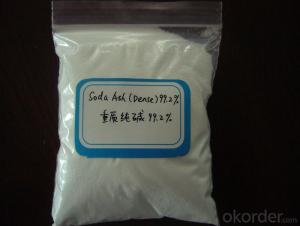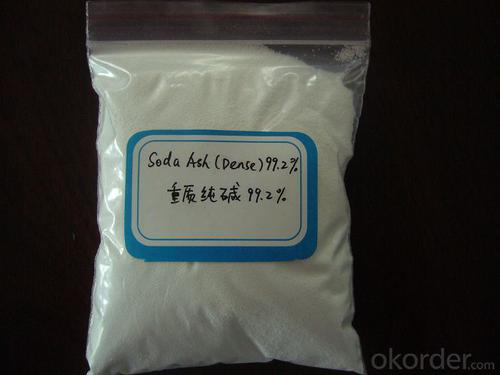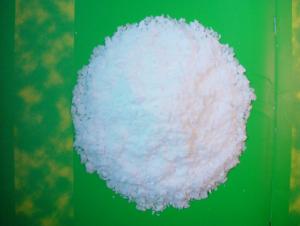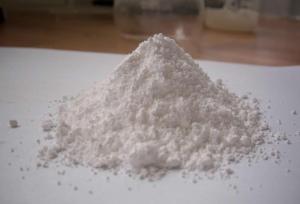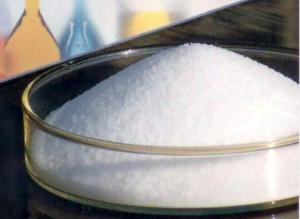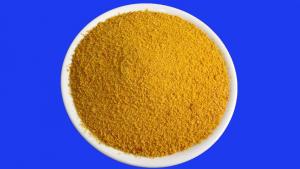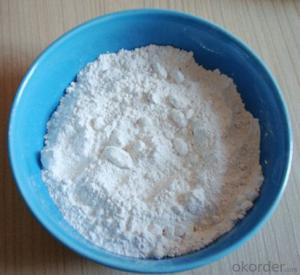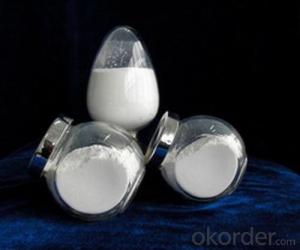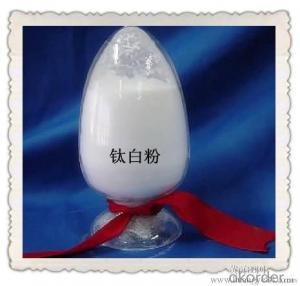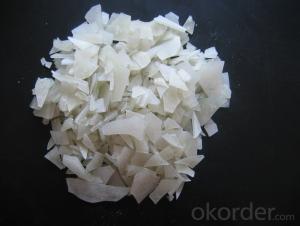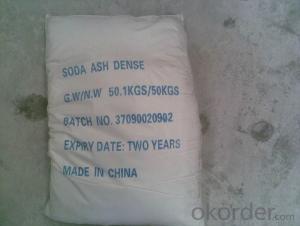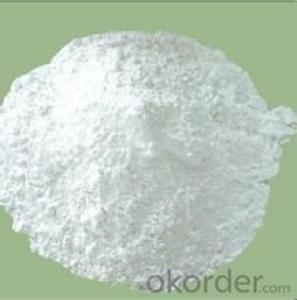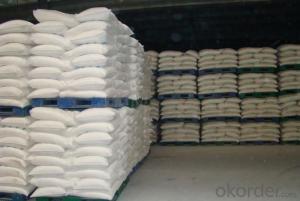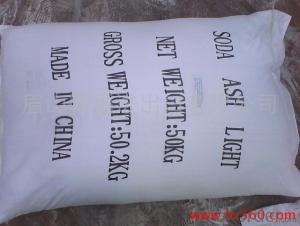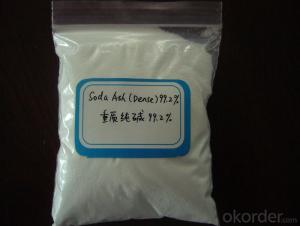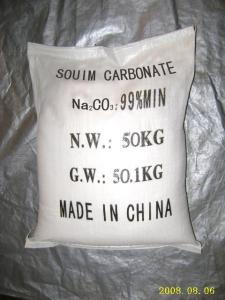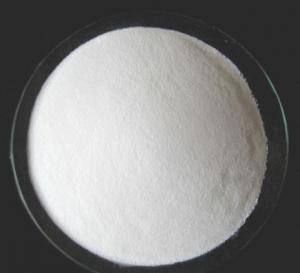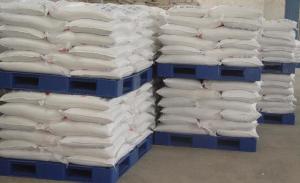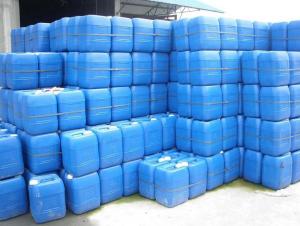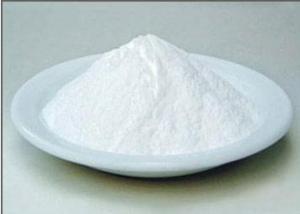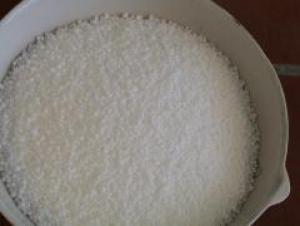Soda Ash Dense with Good Quality with Cheap Price
- Loading Port:
- China Main Port
- Payment Terms:
- TT or LC
- Min Order Qty:
- -
- Supply Capability:
- -
OKorder Service Pledge
OKorder Financial Service
You Might Also Like
1. Structure of Soda Ash Description:
CAS NO.: 497-19-8
MF: Na2CO3
Grade Standard: Industrial Grade
Standard:GB210-92
HS Code: 28362000
Purity: 99%~99.2%
Packing&Delievery: 25/40/50kg/bag,750/1000 jumbo bag,plastic woven bag with PE liner
All year Delievery
2. Main Features of Soda Ash:
1.CAS NO.: 15630-89-4
2.Type: coated and uncoated
3.Application: Bleaching, sterilization
4.Better than Sodium Perborate
Sodium percarbonate is a chemical, an adduct of sodium carbonate and hydrogen peroxide (a perhydrate), with formula 2Na2CO3· 3H2O2. It is a colorless, crystalline, hygroscopic and water-soluble solid. It is used in some eco-friendly cleaning products and as a laboratory source of anhydrous hydrogen peroxide.
This product contains the carbonate anion, and should not be confused with sodium peroxocarbonate Na2CO4 or peroxodicarbonate Na2C2O6, which contain different anions.
Sodium percarbonate is very neat stuff. It is a powder that releases hydrogen peroxide, and it is very concentrated.
To be complete, sodium percarbonate releases hydrogen peroxide and soda ash. As we know, hydrogen peroxide breaks down into oxygen and water. As you may expect, then, sodium percarbonate breaks down into oxygen, water, and soda ash.
3.Soda Ash Images



4.Soda Ash Specification
Item | Soda Ash Dense | Soda Ash Light |
Index | Index | |
Total alkali(quality fraction of Na2CO3 dry basis) | 99.2% min | 99.2% min |
NaCI (quality fraction of NaCI dry basis) | 0.70% max | 0.70% max |
Fe quality fraction (dry basis) | 0.0035% max | 0.0035% max |
Sulfate(quality fraction of SO4 dry basis) | 0.03% max | 0.03% max |
Water-fast substance in quality fraction | 0.03% max | 0.03% max |
Accumulation density(g/ml) | 0.90% min | |
Particle size, 180 µ m sieving residue | 70.0% min |
5.FAQ
1)How many tons does your factory can supply each moth?
30000tons/month
2)How to quarantee the quality of the products?
you can arrange SGS&BV or other quality inspection.
3)How many days you need to pepare the cargo after we made the order?
within 30 days.
- Q: Several kinds of inorganic salt food sources?
- Milk containing calcium, spinach iron, kelp containing iodine, oysters containing zinc, carrots containing A, tomatoes containing C, mushrooms with B1, sun can get D
- Q: For patients with ulcerative colitis, which inorganic salt foods can eat?
- Vegetables Cooking Choose fresh vegetables with more vitamins and inorganic salts.
- Q: Is it possible to adjust the internal temperature of the carbohydrate in the vacuole
- multi-cell plant cells are living in the individual within the water environment, but this environment with the human body's internal environment can only be similar is not the same, and plant cells and no extracellular liquid this argument.
- Q: Finished homework, why the neck acid
- Because you write homework when the back of the neck will be bent over a long time will acid
- Q: How do you understand the meaning of the poem in the "lonely laughter and laughter".
- Lonely, is silence, empty. Those who cherish lofty ideals are misunderstood, seemingly incomprehensible, and historically have this situation. The ideal is to change the status quo. And the people who have not yet realized, always think that the status quo is right and proper, to change the status quo, in their view is outrageous, is crazy, is madman, to avoid him, against him, the situation of the struggle to fall into solitude.
- Q: I am an AP biology student testing how magnesium effects the rate of photosynthesis in a plant. However since my class period is only one hour long I highly doubt if i add epsom salt to the soil ( after mixing it with water) i will see an immediate increase in the rate of photosynthesis. So i need to know how long should i wait to test photosynthesis rates after adding an epsom salt solution to the soil of a plant. Or how long does it take for magnesium to be incorporated into a plants rate of photosynthesis. Thanks in Advance!
- Magnesium sulfate (or magnesium sulphate) is an inorganic salt (chemical compound) containing magnesium, sulfur and oxygen, with the formula MgSO4. It is often encountered as the heptahydrate sulfate mineral epsomite (MgSO4·7H2O), commonly called Epsom salt, Magnesium is part of the chlorophyll in all green plants and essential for photosynthesis. It also helps activate many plant enzymes needed for growth. Rate of photosynthesis does not depend upon any single factor . so it is futile to expect it should increase after addition of epsom salt to soil in solution form . Because first it should be incorporated in chlorophyll molecule . That depends upon formation of new leaves . Old leaves already have it ( formula of chlrophyll a = C55 H72 O5 N4 mg ) That is the requirement is just one atom per molecule . what to do with excess ? Unless the soil is deficient in Mg . It it useless to add it . soil pH is another factor to be considered = Soil pH (a measure of the acidity or alkalinity of the soil) Soil pH is one of the most important soil properties that affects the availability of nutrients. Macronutrients tend to be less available in soils with low pH. Micronutrients tend to be less available in soils with high pH. www.ncagr /cyber/kidswrld/plan...
- Q: List the major electrolytes released by inorganic salts when placed in water and explain how these electrolytes are needed for metabolic reactions.
- Which "inorganic salts" are you talking about? There are hundreds!
- Q: The inorganic salt is composed of?
- Inorganic salts are the general term for various inorganic salts. They are composed of inorganic acid radicals and metal cations or ammonium salts, mainly salts of organic acid salts, such as sodium chloride, potassium chloride and so on.
- Q: What is the elemental element
- Elemental iron, Fe gas Elemental O2 These are the same kind of elements composed of the same kind of molecules / ions / atoms
- Q: What is the role of alkali in the surface
- (Sodium bicarbonate) (chemical formula Na2CO3) and baking soda (sodium bicarbonate) (chemical formula NaHCO3), baking soda is a solution of soda ash or crystal after the absorption of carbon dioxide after the finished product , The two are essentially different.Therefore, the consumption of alkali in some places also known as baking soda (powder). Edible alkali was solid state, round, color white, soluble in water. Alkaline is not a common Seasoning, it is just a food loose agent and meat tenderizer, can make dry goods raw materials quickly rise, soften the fiber, remove the dough's sour taste, the appropriate use for food can bring excellent color, Shape to enhance people's appetite. Alkaline used in a large number of food processing such as noodles, bread, bread, etc.
Send your message to us
Soda Ash Dense with Good Quality with Cheap Price
- Loading Port:
- China Main Port
- Payment Terms:
- TT or LC
- Min Order Qty:
- -
- Supply Capability:
- -
OKorder Service Pledge
OKorder Financial Service
Similar products
Hot products
Hot Searches
